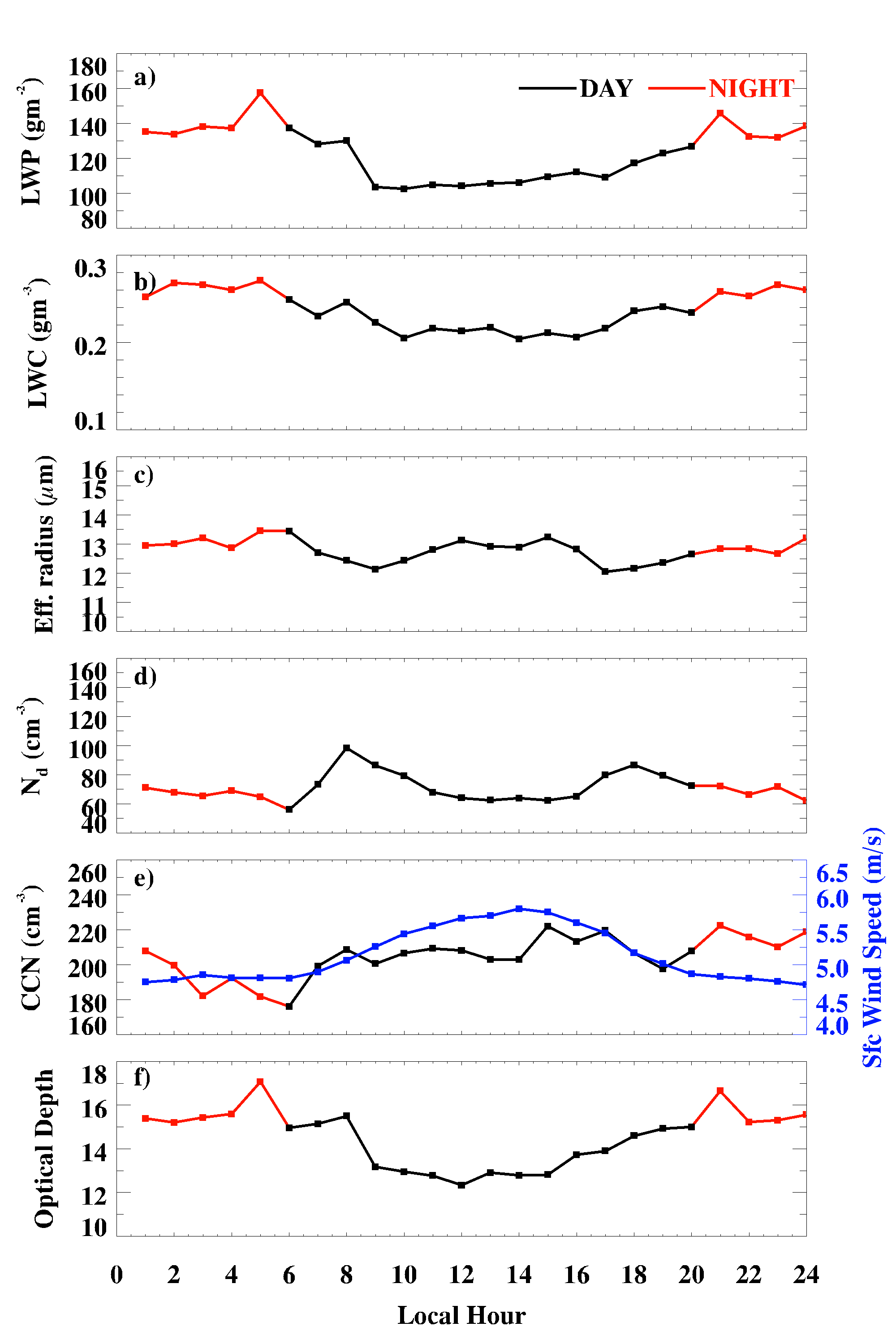Diurnal Variation of MBL Cloud Properties over the Azores
Submitter:
Dong, Xiquan — University of Arizona
Area of research:
Radiation Processes
Journal Reference:
Science
For the single-layered marine boundary layer (MBL) cloud microphysical properties, Dong, Xi, and Wu (2014) provided the diurnal variations of cloud liquid water path (LWP) and liquid water content (LWC). However, they only presented the daytime LWP, LWC, cloud-droplet effective radius (re), number concentration (Nd), and cloud optical depth (τ), as well as surface-measured cloud condensation nuclei (CCN) and number concentration (NCCN).
Impact
In the Dong et al. (2014) study, a new algorithm was developed based on the method of Dong and Mace (2003) to retrieve the nighttime re. Once re is known, the same method can be used for daytime retrievals to calculate Nd and τ. The combination of daytime and nighttime results allowed us to investigate the diurnal variations of the MBL cloud microphysical properties over the Azores. Furthermore, the nighttime cloud microphysics retrievals provided an additional data source to validate the satellite nighttime retrievals over the Azores.
Summary
Compared to the corresponding daytime results presented in the Dong, Xi, and Wu (2014) study over the Azores region, all nighttime monthly means of cloud LWP exceeded their daytime counterparts with an annual mean LWP of 140 gm-2, which is ~30.9 gm-2 larger than daytime. Because the MBL clouds are primarily driven by convective instabilities caused by cloud-top longwave (LW) radiative cooling, more MBL clouds are well mixed and coupled with the surface during the night; thus, its cloud layer is deeper and its LWP is higher. During the day, the cloud layer is warmed by the absorption of solar radiation and partially offsets the cloud-top LW cooling, which makes the cloud layer thinner with less LWP. The seasonal and diurnal variations of cloud LWC and optical depth basically follow the variation of LWP. There were, however, no significant day-night differences and diurnal variations in re, Nd, and corresponding surface-measured CCN number concentration (NCCN) (at Supersaturation S=0.2%). Surface NCCN increased from around sunrise (0300-0600 LT) to late afternoon, which strongly correlated with surface wind speed (r=0.76) from 0300 to 1900 LT. The trend in hourly mean Nd was consistent with NCCN variation from 0000 to 0900 LT, but not for afternoon and evening with an averaged ratio (Nd / NCCN) of 0.35 during the entire study period.


